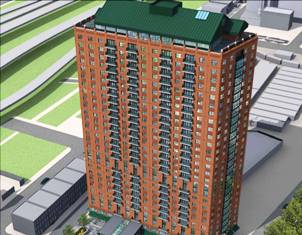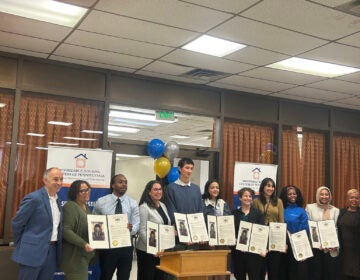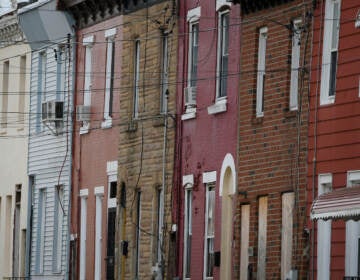World Trade Center story draws response

June 18, 2008
Letter to the Editor
Thank you for the opportunity to respond to your June 3rd article regarding the development of the World Trade Center site, “Signs of a World Trade Center? Not Exactly.” We would like to address some inaccuracies in the article.
The site is owned by Waterfront Renaissance Associates (WRA), which is a Pennsylvania Limited Partnership. WRA’s vision is to develop a World Trade Center of Greater Philadelphia complex and make Philadelphia one of the 100 cities in the 305 city World Trade Centers Association with a major WTC. Located on Columbus Boulevard at Callowhill Street, the site has been designed to allow for the phased development of nearly 4 million square feet of residential, office, retail and parking. Its close proximity to the Market Frankford line would commercially bind the waterfront to the heart of Center City.
The demolition work described in your article was driven by the business considerations of WRA and the condition of the site. Contrary to the statements of unidentified neighbors, the partnership has not “promised” Senator Fumo to “clear and fence the site.” The partnership has had no contact with Senator Fumo since 2001. We noted that, pursuant to the regular inspections we’ve made over the years, a wall was subtly leaning on the east side of the primary building on the site at the corner of Callowhill and Columbus. This, and other considerations, made demolition appropriate at this time.
Contrary to Mr. Scorsone’s comments concerning a “rat infestation”, the City has a regimen for inspecting sites prior to demolition, in fact did so in this case, and found no such condition.
We learned of the unfortunate incident concerning Mrs. Scorsone in November, 2007. Upon learning of this, we immediately contacted the police. We then successfully addressed the possibility of transient activity by arranging for a private, professional security service to provide seven-day-a-week observation of the site. The site was, thus, trouble-free to the date of demolition.
Contrary to Mr. Scorsone’s representation that the lawsuit has been dismissed, on March 31, 2008 the Court ruled that WRA could proceed with the lawsuit, including its breach of contract claim against certain Civic Associations, including Rivers Edge Civic Association.
We will now address the issue of why development progress has not been made on the project. The World Trade Center effort, made possible and encouraged by nearly twenty years of City and State collaboration with WRA., provides for the phased development of nearly four million square feet of space. This is embodied in an agreement with the DRPA, the lead agency in the effort. The plan consists of a residential tower and three office buildings, at an estimated total cost of over a billion dollars. The design, amongst other things, adheres to the “best practices” of the Urban Land Institute for “place making” and how major mixed use projects accommodate, and not conflict with, important neighborhood needs. Design controls requested by certain Civic Associations were also incorporated to respect the residential nature of the surrounding area and provide visual and pedestrian access to the Delaware River. These design controls were embodied in a 1989 Zoning Covenant.
By 2006, WRA was prepared to commence development of the first two towers to be built on the site in the following sequence: 1) a twenty eight story high-rise rental residential building along Callowhill Street (approximately 400,000 square feet), and 2) an eighteen story office building, Tower One of the Greater Philadelphia World Trade Center (approximately 400,000 square feet) which would sit atop a nine-level parking garage to service the parking needs of the two buildings. These buildings would be physically and operationally linked together.

(A rendering of the two buildings and the garage is attached.) All of the planned space is in strict compliance with the site’s FAR controls and with the design controls embodied in the 1989 Zoning Covenant. However, the design was predicated on the absence of height restrictions, a factor which caused the City Planning Commission to recommend and support rezoning the site to C-4.
The site’s C-4 zoning was absolutely critical to the orderly development of the site because: 1) it provides the design flexibility to phase the project and build each building with infrastructure to support future buildings; 2) it allows for the design flexibility of the future buildings which is critical in responding to the needs of commercial tenants, and 3) it provides for the design flexibility in responding to considerations in an emerging market like the Central Delaware.
The Project was in the midst of construction permitting for its first phase when, in April of 2006, the City imposed a 65’ height restriction on the area without appropriate examination of its effect on sites on the waterfront. In encouraging the expansion of the height limitation the Civic Associations may have breached the 1989 Zoning Covenant.
WRA brought suit only after attempting to resolve the matter amicably with the City.
The height restriction has had the effect of destroying this $300 million, three building “first phase” of the project, because WRA is confronted with two conditions which are currently irreconcilable: 1) the first building is incorrectly designed if the adjoining office tower and parking garage cannot be built, and 2) the first building cannot be redesigned without losing its permit and subjecting it to the 65’ height limit.
We have a great deal of sorrow and disappointment over the way this matter has evolved over the past couple of years. WRA has been dedicated to bringing the World Trade Center concept to Greater Philadelphia for nearly twenty years, and co-founded the World Trade Center of Greater Philadelphia (“WTCGP”) with State and City agencies and officials. Since its inception in 2002, WTCGP has been responsible for the development of $228 million in exports and the creation of over 2400 permanent jobs. In an article dated June 6th, 2008 which appeared in the Philadelphia Inquirer, Moody’s Economy.com concluded: “The key for Philadelphia is to make itself even more of a center for global commerce than it is today.” The success of World Trade Center of Greater Philadelphia to date is evidence that Philadelphia would benefit from and deserves a world-class World Trade Center complex.
Sincerely yours,
Vince Powers
Partner
Devine + Powers
vpowers@devinepowers.com
for Waterfront Renaissance Associates
WHYY is your source for fact-based, in-depth journalism and information. As a nonprofit organization, we rely on financial support from readers like you. Please give today.






